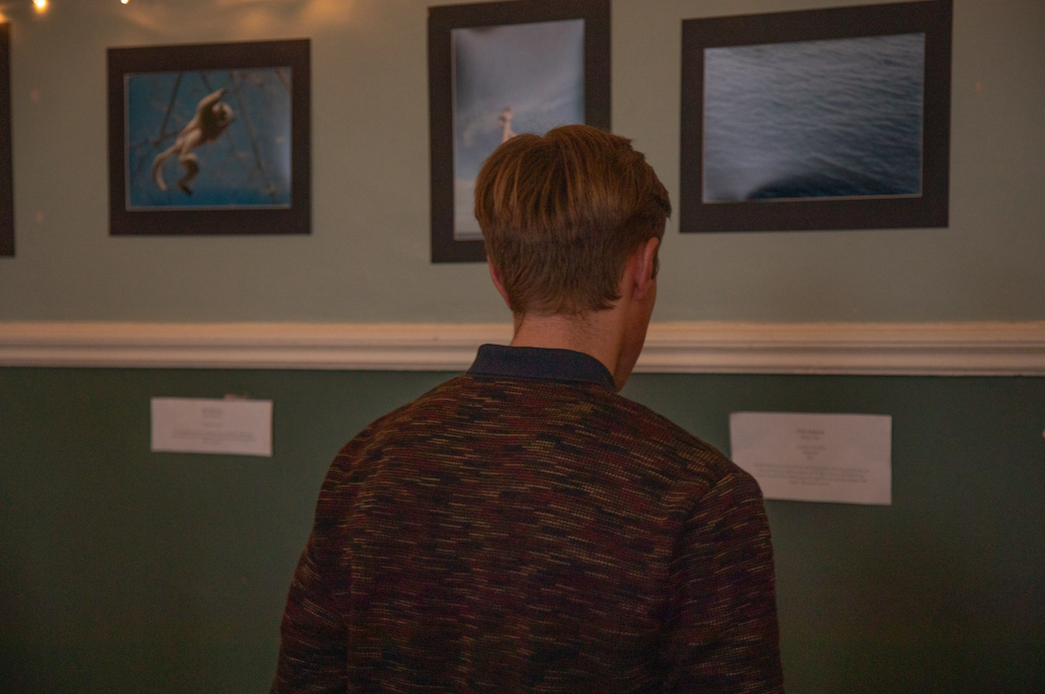The climate crisis affects the entire student body. This is something which has become particularly clear in recent weeks, with large swathes of Trinity students heading to Front Square and beyond to protest environmental injustices, shouting Extinction Rebellion Ireland’s battle cry. From Greta Thunberg’s speeches to international protests, climate awareness events are taking place all the time, and DUPA, Envirosoc, and FLAC have followed suit, but not without their own creative twist.
On a dreary and rainy Thursday afternoon, I made my way over to the GMB. Upon reaching the top floor, I found the room transformed with fairy lights and an array of photographs varying in colour and meaning, all united by the theme of Environment. Dozens of people congregated to view the exhibition, wine glasses in hand.
Budding photographers displayed their fantastic work and explained what the term environment means to them individually. Unsurprisingly, a myriad of interpretations were found. There really was everything: photos of single-use plastics, images of people swimming in the Irish sea, and poignant pictures of young protesters during the strike that took place on September 20. The exhibition posed the question: what is the environment? And then answered it by showing that the environment is made of millions of things, and millions of people all interacting with each other. The environment is where we live, the photos seemed to say. It is more than some abstract concept currently being debated by us daily in the media, on our commutes and in our homes at night.
Ivan Rakhmanin, the chairperson of DUPA, talked about the thinking behind the theme of this year’s event: “Last year, we held a general exhibition on the topic of activism. This year, we wanted to do that again, but we also found climate change to be an important theme at the moment… we get to display photos from the recent climate strike, so we can see the more positive part to it.”
A representative of Trinity FLAC (Free Legal Advice Clinic) also addressed the room. He explained that FLAC’s aim of achieving social justice legally can be used to aid the climate crisis. He then introduced Orla Kelleher, a doctoral scholar at UCD Sutherland School of Law, as the guest speaker of the night.
Kelleher’s specialisation is in climate law. She gave a brief description of her thesis work, and then outlined some legal aspects affecting climate action in recent years. She explained that, even though Irish climate activists lost a case against the government regarding its lack of action towards climate issues in mid-September, she felt that “they won a really significant argument – that they were entitled to bring the case on human rights to constitutional grounds”. She recalled stories about similar court cases in which people and groups did win against the government, such as an NGO from the Netherlands and a Pakistani farmer. Kelleher said that we must focus on our “tiny victories”, and remember that we should use these cases as “a reminder that law is only one part of the fight when it comes to climate change, and that there is so much more to engage in – from politics, to economics, to the art that was being displayed in the same room.”
The striking work of one photographer at the exhibition was particularly eye-catching, and a small crowd began to form around her work. I asked the photographer, Niamh Barry, to explain to me what these photos meant to her, and she explained: “My first photo really shows that it doesn’t matter what age, race, or gender you subscribe to, climate change affects us all. It’s really interesting to me that as a human race we fight with each other, but with climate change there is no division, just us versus the system. Humans as a collective will come together in history, against all odds.”
The chairperson of TCD Envirosoc and enthusiastic environmental activist, Shibeal McCann further emphasised the importance of this event. She explained that, for her, the night showed a “balance between what activism looks like, whilst also showing the natural world we need to protect”.
Overall, the event was a great success for all three societies, as the event was well attended by enthusiastic participants and students alike. It was a fantastic and different way for attendees to have authentic and constructive conversations about the climate crisis affecting our world, and explore what they, as individuals and a group, can do about it. In the words of McCann, the event’s goal was to “show the problem and the solution simultaneously, all in one room” – a goal which, I believe, was fully achieved on the night.






